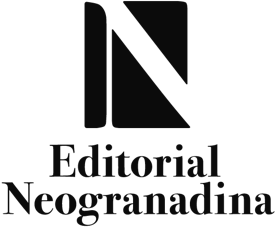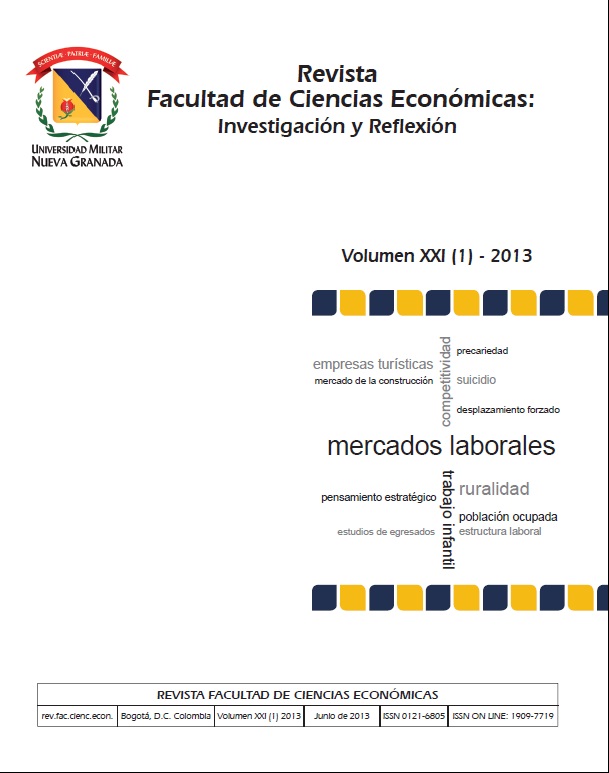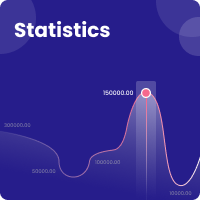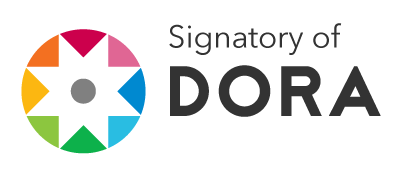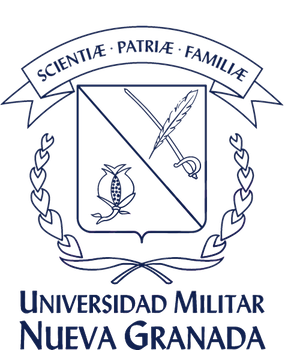An approximation to the strategic thinking study field from academic publications perspective: From the predictable to the emergent
Abstract
In the last two decades, various management authors have encouraged thoughts about the dominant paradigm in the strategy field. Critics have focused on the deterministic approach which has been used to deal with the strategic problem, establishing the necessity to question the prevailing mechanistic-rational model and propose new principals consistent with the current world conditions of organizations. In that sense, the present article is a systematic literature review that not only aims to point out the configuration of the strategic thinking elements in recent years, but also to recognize the characteristics of the emerging perspective that has been consolidated in the field.
Downloads
Languages:
porReferences
Andrews, K. (1971). The concept of Corporate Strategy. Homewood, IL: Irwin editions.
Ansoff, I. (1965). Corporate Strategy. New York: McGraw-Hill.
Ansoff, I. (1987). The emerging paradigm of strategy behavior. En: Strategic Management Journal, 8: 501-515.
Ansoff, I. & Sullivan, P. (1993). Empirical proof of the paradigms theory of strategy success behaviors of environmental serving organizations. En: International Review of strategy management; Vol, 173-203.
Berelson, B. (1952). Content Analysis in Communication Research. New York: Free Press.
Boyd, B., Gove, S. & Hitt, M. (2005). Consequences of measurement problems in strategic management research. En: Strategic Management Journal, 26 (4), 367-375.
Bracker, J. (1980). The Historical Development of the Strategic Management Concept. En: Academy of Management Review, 5: 219-224.
Bruner, J. (1968). El Proceso de la Educación. Colecciones Manuales UTEHA. En: Serie Educación, 17: 89 - 93.
Carrance, F. (1986). Les Outils de planification stratégique auconcret. Tesis doctoral. Ecole Polytechnique, Paris.
Chandler, A. (1962). Strategy and structure: Chapters in the History of the Industrial Enterprise. USA: Cambridge, MA: MIT Press.
Cole, A. (1959). Business Enterprise in Its Social Setting. Cambridge, USA: Harvard University Press.
Creswell, J. (2003). Research design: qualitative, quantitative, and mixed method approaches (2ª ed.). London: SAGE.
Delgado, C. & Sotolongo, P. (2006). La complejidad y el nuevo ideal de racionalidad. La revolución contemporánea del saber y la complejidad social. Hacia unas ciencias sociales de nuevo tipo. Buenos Aires: Colección Campus Virtual CLACSO.
Dewey, J. (1989). Cómo pensamos. Nueva exposición entre la relación entre pensamiento reflexivo y proceso educativo. Barcelona: Paidós.
Etkin, J. & Schvarstein, L. (2005). Identidad de las organizaciones: invarianza y cambio. Buenos Aires: Editorial Paidós.
Etkin, J. (2003). Gestión de la complejidad en las organizaciones. Las estrategias frente a lo imprevisto y lo impensado. Buenos Aires: Ediciones Granica.
Ezzamel, M. & Willmott, H. (2004). Rethinking Strategy: Contemporary Perspectives and Debates. En: European Management Review, (1): 43 - 48.
Feurer, R. & Chaharbaghi, K. (1995). Strategy Development: Past, Present and Future. En: Management Decision, 33 (6): 11 - 21.
French, S. (2009). Cogito Ergo Sum: Exploring Epistemological Options for Strategic Management, En: Journal of Management Development, 1 (28): 18 - 37.
Fréry, F. (2006). The fundamental dimensions of strategy. En: MIT Sloan management review, 48 (1): 71 - 75.
Furrer, O., Thomas, H. & Goussevskaia, A. (2007). The structure and evolution of the strategic management field: A content analysis of 26 years of strategic management research. En: International Journal of Management Reviews, Vol. 10 (1): 1 - 23.
Gratton, C. & Jones, I. (2004). Research methods for sport studies. London: Routledge.
Hamel, G. & Prahalad, C.K. (1994). Competing for the Future. Boston: Harvard Business School Press.
Harper, S. & Lynch, J. (1992).Estrategia empresarial. Buenos Aires: Editorial El Ateneo.
Hart, S. (1992). An integrative framework for strategy-making processes. En: Academy of Management: 327-352.
Knight, K. (1967). A Descriptive Model of the Intra-Firm Innovation Process. En: Journal of Business, 40 (4): 478-496.
Krippendorf, K. (1990). Metodología de análisis de contenido. Teoría y Práctica. Buenos Aires: Paidós Comunicación.
Le Moigne, J. (1997). La incoherencia epistemológica de las ciencias de la gestión. En: Cuadernos de Economía No. 26. Universidad Nacional de Colombia.
Lindblom, C. (1959). The Science of Muddling Through. En: Public Administration Review: 79-88.
López, P. & Mariño, A. (2010). Hacia una evolución en el campo del conocimiento de la disciplina administrativa: de la administración de empresas a la gestión de organizaciones. En: Revista Facultad de Ciencias Económicas, XVIII (2): 75-93.
Manucci, M. (2006). La estrategia de los cuatro círculos. Diseñar el futuro en la incertidumbre del presente. Bogotá: Norma GE.
Martinet, A. (1996). Pensé strategique et rationalités: Un examen épistémologique. En: Papier de recherché numéro 23. Lyon: Institut d’ Administrátion des Enterprises.
Martinet, A.(1997). Planification Stratégique. En: Simon, Y. & Joffre, P (comps.) Encyclopédie de Gestión (2249 – 2265). Paris: Economica, Tomo II.
Menguzzatto, M. & Renau.J. (1991).La dirección estratégica de la empresa. Barcelona. Editorial Ariel.
Mintzberg, H. (1990). The Design School, Reconsidering the basic premises of Strategic Management. En: Strategic Management Journal, 11: 171 – 195.
Mintzberg, H. (1994). The Rise and Fall of Strategic Planning: Reconceiving Roles for Planning, Plans, Planners. Free Press: New York.
Mintzberg, H., Ahlstrand, B. & Lampel, J. (1998). Strategy Safari: A Guided Tour Through The Wilds of Strategic Management. USA: The free Press.
Morin, E. (1993). El Método I. La Naturaleza de la Naturaleza. Madrid: Ed. Cátedra S.A.
Morin, E. (2001). Introducción al Pensamiento Complejo. Barcelona: Editorial Gedisa.
Morin, E. (2007). La epistemología de la complejidad. El paradigma ecológico en las Ciencias Sociales. Barcelona: Icaria Editorial.
Morrisey, G. (1997). Pensamiento estratégico. México: Prentice Hall.
Navarro, J. (2000). Gestión de organizaciones: Gestión del caos. En: Revista Dirección y Organización, Universidad Politécnica de Madrid, 23: 136 – 145.
Nerur, P., Rasheed, A. & Natarajan, V. (2008). The Intellectual Structure of the Strategic Management Field: an Author Co-citation Analysis. En: Strategic Management Journal, 29, (319-336).
Ohmae, K. (1983). La mente del estratega: el triunfo de los japoneses en el mundo de los negocios. México: McGraw Hill.
Ohmae, K. (1995). The End of Nation State. The Rise of Regional Economies. New York: Free Press Paperbacks.
Pérez, R. (2004). La nueva teoría estratégica: Estado de la cuestión. Presentado en el II Encuentro Iberoamericano sobre estrategias de comunicación.
Pérez, R. (2007). Las siete señas de identidad de la nueva teoría estratégica. En: FISEC-Estrategias, 3 (7): 6-27.
Pettigrew, A., Thomas, H. & Whittington, R. (2001). Strategic Management: The Strengths and Limitations of a Field. En: Handbook of Strategy and Management (3-30).
Porter, M. (1980) Competitive Strategy: Techniques for Analyzing Industries and Competitors. New York: Free Press.
Prahalad, C. & Hamel, G. (1994). Strategy As A Field Of Study: Why Search For A New Paradigm? Strategic Management Journal, 15: 5-16.
Quinn, J. B. (1980). Strategies for Change: Logical Incrementalism. USA: Richard D. Irwin, Inc.
Ramanantsoa, B. (1997). Stratégie. En: Simon, Y. & Joffre, P. Encyclopédie de Gestión. (3026-3042). Paris: Economica, Tomo III.
Ramos, A. & Ruiz, J. (2004). Changes In The Intellectual Structure Of Strategic Management Research: A Bibliometric Study Of The Strategic Management Journal, 1980–2000. En: Strategic Management Journal, 25: 981-1004.
Román, O. (2010). El pensamiento estratégico. Una integración de los sentidos con la razón. En: Revista Científica Guillermo de Ockham, 8. (2): 23-36.
Ronda, G. & López, E. (2008). Empleo del Análisis de Redes Sociales para el estudio de la estructura de la relación entre definiciones del concepto estrategia elaboradas entre los años 1962 y 2003. En: Revista hispana para el análisis de redes sociales, 14 (9).
Schendel, D.E. & Hoffer, C. (1978). Strategic Management: A New View of Business Policy and Planning. Boston: Little Brown.
Schumpeter, J. (1947). The Creative Response in Economic history. USA: Journal of Economic History.
Selznick, P. (1957). Leadership in Administration: a Sociological Interpretation. Evanston IL: Row, Peterson.
Sotirin, P. & Tyrell, M (1998). Wondering about critical Management studies. En: Management Communication Quarterly, 2: 303-336.
Stacey, R. (2000). Strategic Management and Organizational Dynamics: The Challenge of Complexity. London: Prentice Hall.
Tabatorny, P. & Jarniou, P. (1975). Les systemes de Gestion: politiqueset structures. París: PUF.
Tsoukas, H. & Knudsen, C. (2002). The Conduct Of Strategy Research. En: Handbook Of Management & Strategy. London: Sage Publications.
Van der Heijden, K. (1998). Escenarios. El arte de prevenir el futuro. México: Panorama.
Whittington, R. (2002). What is strategy and Does it matter?. London: Routledge.
Wilson, I. (1994). Strategic planning isn´t dead it change. En: Long range planning, 27 (4): 12-24.
| Article metrics | |
|---|---|
| Abstract views | |
| Galley vies | |
| PDF Views | |
| HTML views | |
| Other views | |

